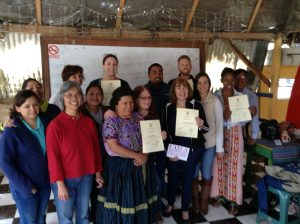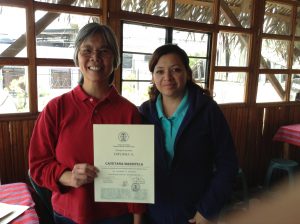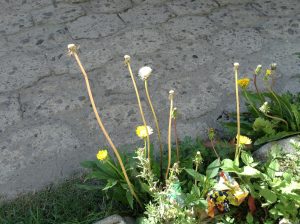Center School District teachers completed a two-week Spanish-language immersion trip to Guatemala this summer after being awarded a travel grant offered by the Kauffman Foundation and Fund for Teachers. Teachers participating in the trip were Kindergarten teacher, Rita Galle; Christian Nord (P.E.); Cayetana Maristela (ELL); Beth Eastman (Speech/ECE); Suzanne Turner (Art); Amy Carr (Art); and Tieranni Potts (1st Grade).

The team chose an immersion program run by Escuela Juan Sisai in Xela (Quetzaltenango). Cayetana Maristela speaks highly of the experience and considers the school’s Spanish language package a great value at $210 per week for five, five-hour 1:1 Spanish classes. Although Cayetana was an ELL student during her K-12 education and is a highly fluent adult, she said this trip increased her empathy for ELL students at Center. When asked to describe the experience of being back in the student’s role of learning a new language (in this case Spanish), Cayatena said,
“This is the first time I’ve tried to learn Spanish formally. As a 53 year old, it’s not that easy.”
Laughing at her own frustration about being corrected by her Spanish-language teacher in Guatemala this summer, Cayetana asked,
“Are you really going to hold me to the correct verb tense?”
To which her teacher promptly replied, “Yes. You really do need to know the correct verb tense.” The experience gave Cayetana an opportunity to reflect on how often she’s said something similar to ELLs at Indian Creek and Red Bridge.

Despite the challenges, I’m happy to report that Cayetana did graduate from her summer learning program! The photo to the right, proves it.
Sisai School also provided two mini conferences during the week. During her two-week stay, Cayetana attended mini conferences featuring Gabriel Garcia Marquez (writer from Colombia), the legends of Guatemala, and an exploration of the volcanoes of Guatemala.
As a way to immerse travelers in the language and culture, Sisai School placed the Center teachers with host families who provided three meals each day, including weekends. Many of the families have hosted students for several years. Cayetana advises,
“If you’re considering an immersion trip through Sisai School, remember that there is no heating system – during the rainy season, be prepared to bring heavier clothing, jackets with hoods, and umbrellas!

Sisai Spanish School also offered optional afternoon activities (some are free). These ranged from cooking classes, walking tours of cemeteries, visits to a chocolatier, a visit with AMA (an organization that promotes women’s concerns), a visit to a hot spring, volcano climbing, and trips to an outdoor market in another town via a ride on the “chicken” bus.
School also offers a laundry service. You simply bring your dirty clothes to school when you arrive for the morning class, and by the end of the day your clothes are returned clean and folded. There is a charge for the laundry service, calculated by the weight of the clothes.
Traveling to Guatemala itself was easy and inexpensive. Plane tickets cost about $600.00, and transportation from Guatemala City to Xela and back was an additional $100.00. The group decided to spend one night in Guatemala City, so there was an additional cost for the hostel that night.
“I would return again. In fact, we met a woman from Germany [who was on] her third time in Xela!” – Cayetana Marisela
When asked how her experiences in Guatemala will impact her practice as an ELL teacher, Cayetana didn’t hesitate to find the right words,
“The trip renewed my empathy for ELLs because as much as we think we know [about teaching], I don’t remember my own experience of being an ELL student trying to learn English. I’d forgotten how hard it is.”
If you have questions about her experience in Guatemala or about her experience applying for the Funds for Teachers grant, you can reach Cayetana Maristela, ELL teacher in Center School District, at cmaristela@center.k12.mo.us

“Educating the mind without educating the heart is no education at all.” ~Aristotle.
Did you have a unique or inspiring experience this summer that will impact your teaching? Please share via “Leave a Comment” or email, Diane Mora, MELL Instructional Specialist, at morad@umkc.edu. I’d love to write about you!